A precise and effective product search is crucial for the success of any e-commerce business. In this tutorial, I will show you how to optimize the product search using the OpenAI API. We will focus on implementing a simulated "database" using Maps to enhance the advisory function of the sales assistant. Let's go through the steps together to implement this important functionality.
Key Insights
- Using Maps allows for efficient storage and retrieval of product information.
- Customizing the product search functions leads to more accurate and relevant responses.
- Implementing error handling provides clear feedback to users when a product is not found.
Step-by-Step Guide to Implementation
To enhance the product search, we proceed in several steps:
Step 1: Creating a Simulated Database
First, we create a database with a Map to store the product information. This Map will serve as the main index where the product ID is associated with a product description.
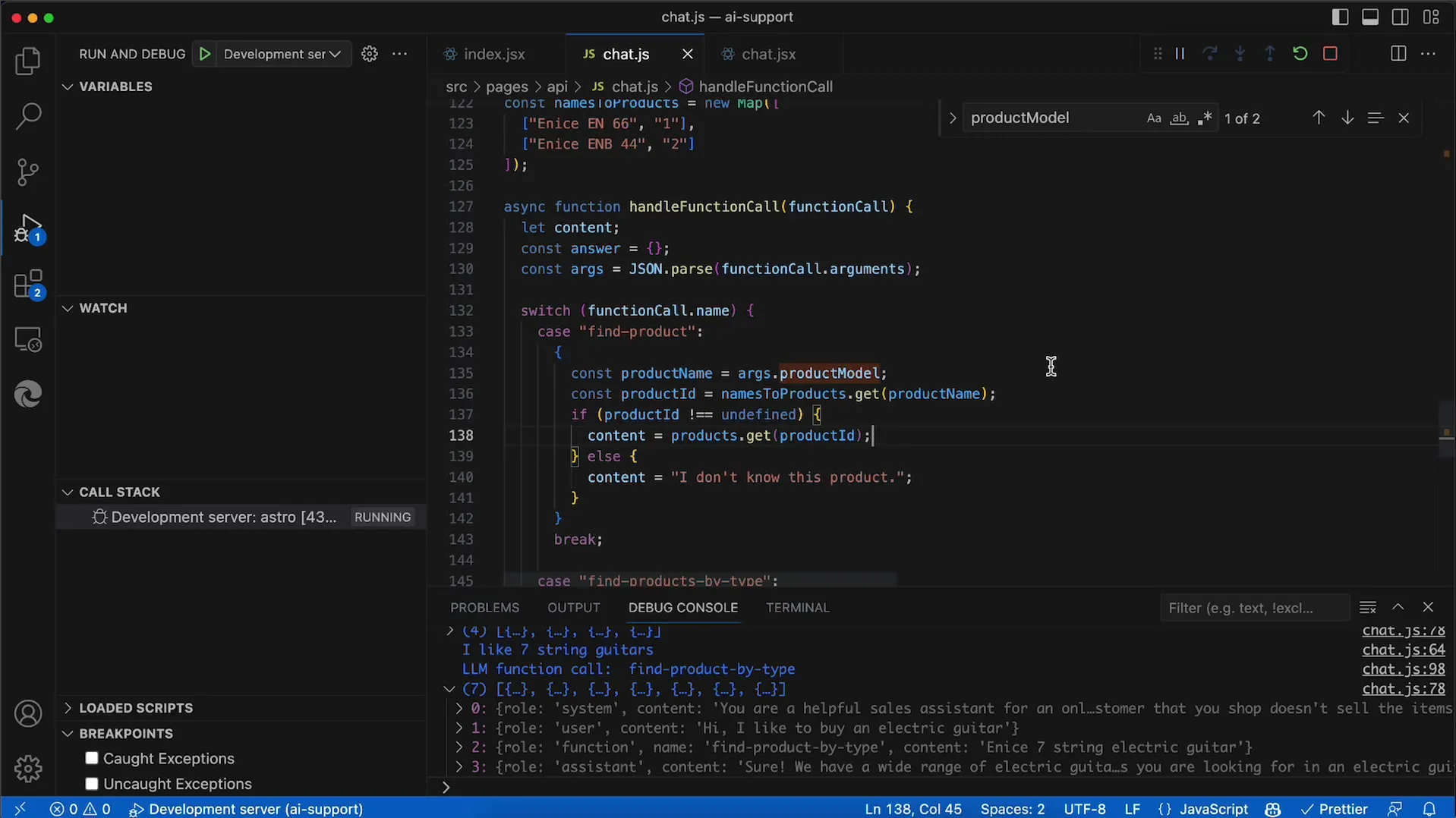
In addition to the main Map, we create two more Maps: one for product types and one for product names. These help us process search queries efficiently based on specific characteristics or names.
Step 2: Customizing the Handle Function
Now we need to customize the function handleFunctionCall to perform the product search in the new structure. Here, we will retrieve the product ID based on the product name. To do this, we extract the product model from the arguments we receive from the API.
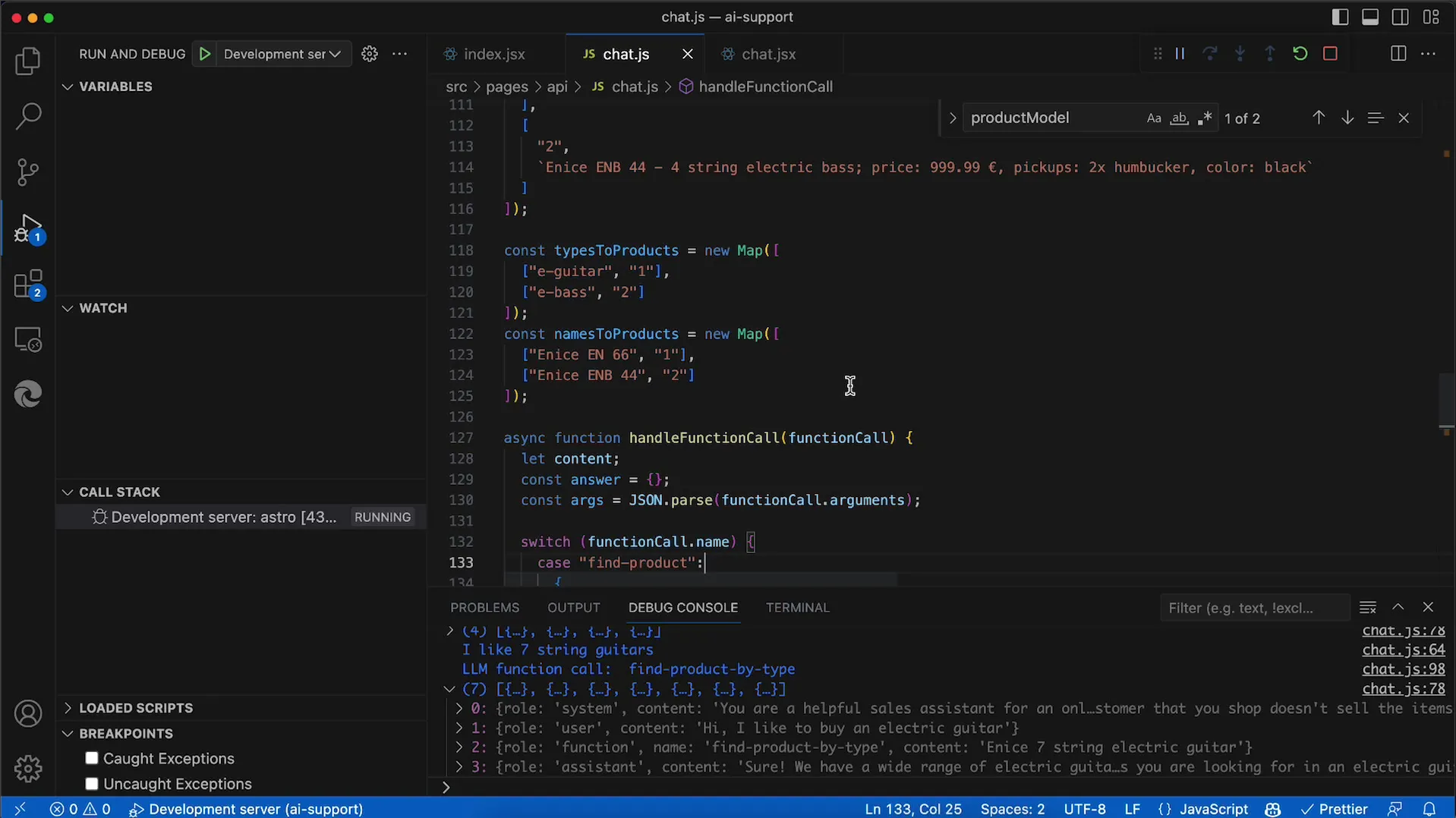
After extracting the product model, we use it to retrieve the product ID from our Map that stores the names of the products.

Step 3: Retrieving the Product Description
Once we have the product ID, we return to the main Map to retrieve the product description. This is done by calling products.get with the product ID we extracted from the previous Map.
If the search yields no results (i.e., the product ID is not found), we provide an appropriate error message. In this case, the feedback will be "I don't know this product", and we assess if we want to modify the response to be more understandable for the user.
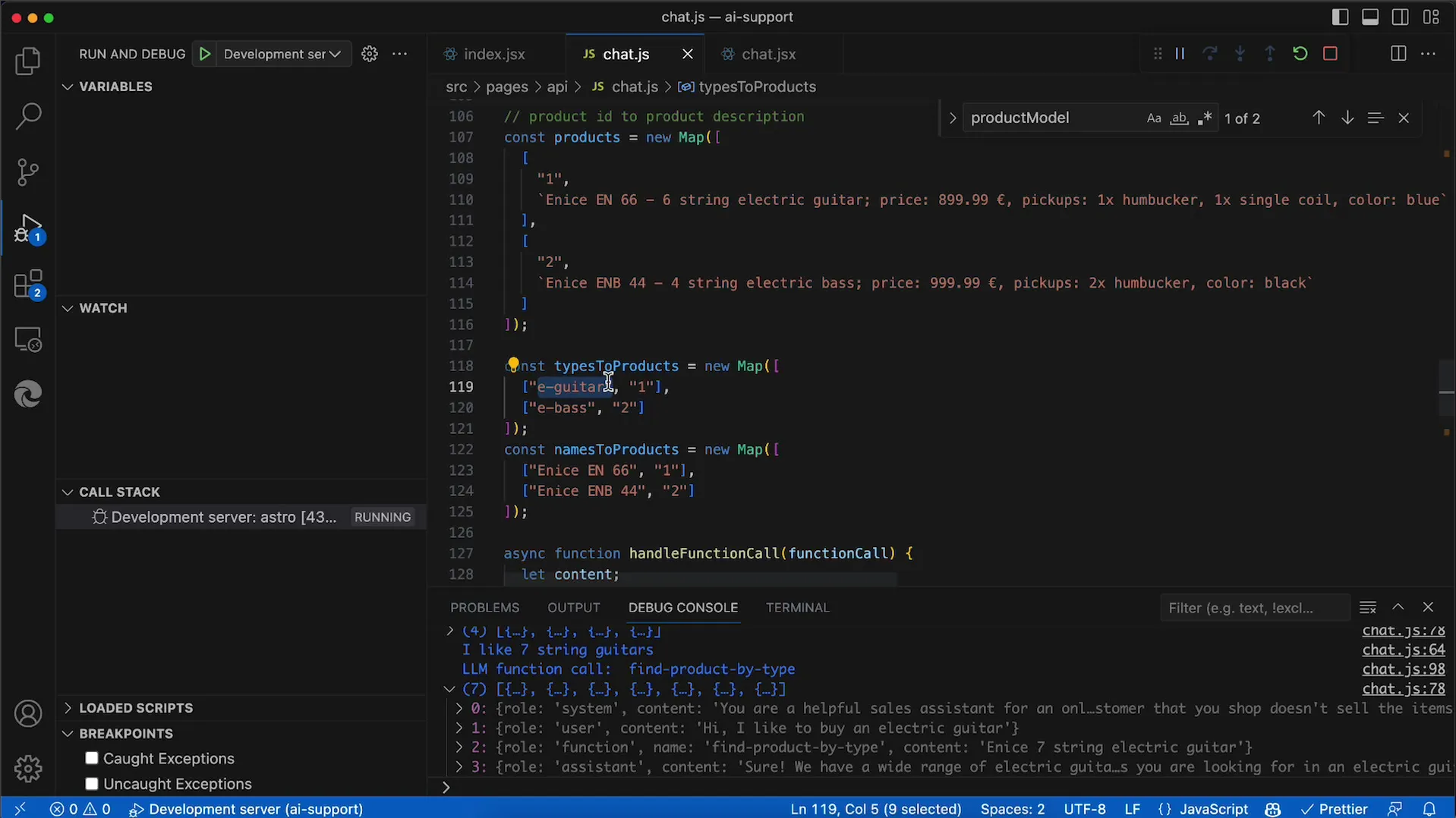
Step 4: Implementing Product Search by Type
In addition to searching for products by their names, we also implement a function that allows searching for products based on their type. We use a similar technique as before, storing the product types in a Map and retrieving the corresponding product ID.
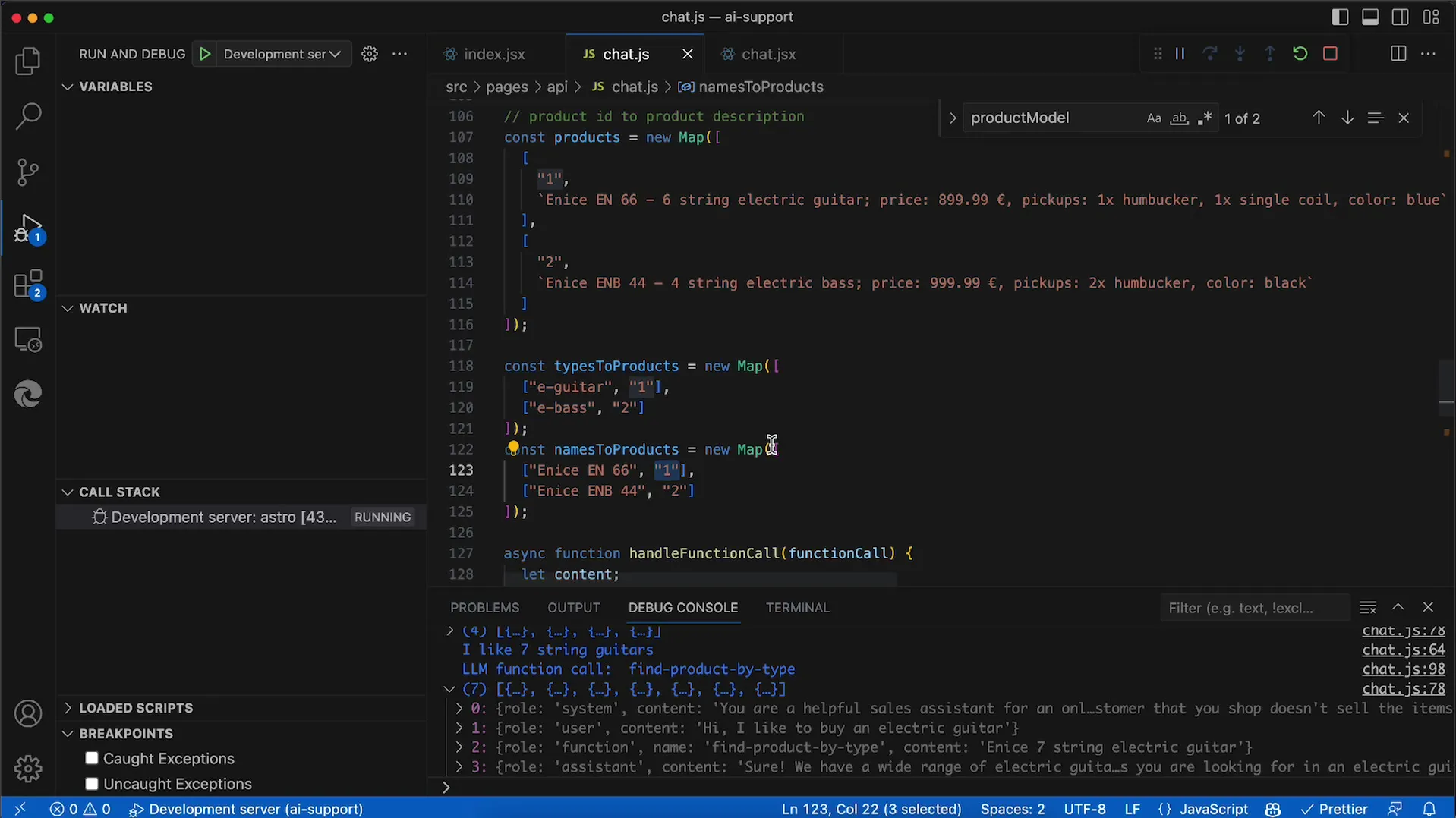
Step 5: Error Handling and User-Friendliness
An important aspect of product search is providing feedback to the user. Currently, we only display a message that a product was not found. Here, we should make our feedback clearer, for example, by outputting "No product found" when the searched product is unavailable.
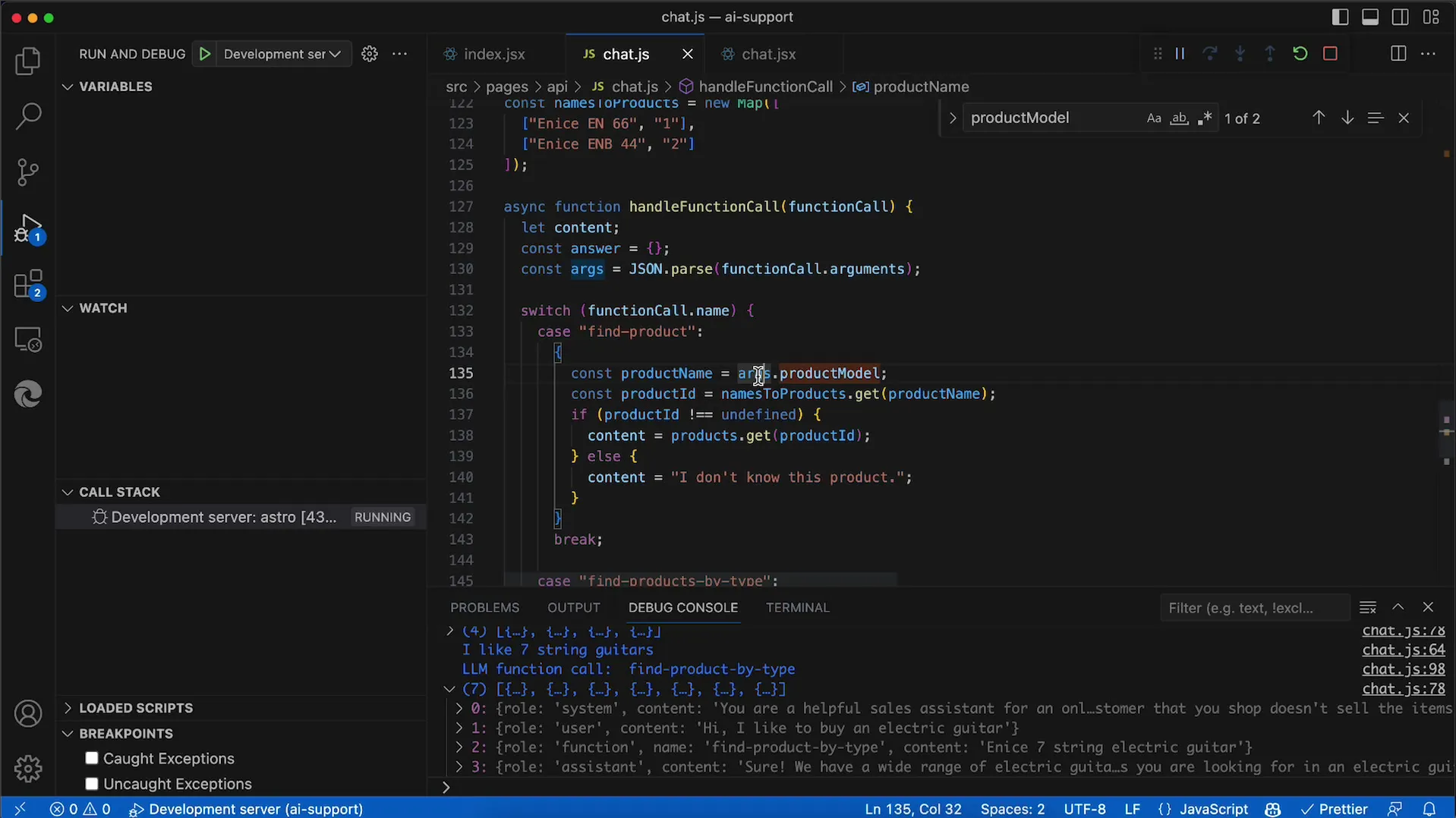
Now we will verify the effectiveness of our adjustments. When making a test request for a specific non-existent product, we should ensure that the correct feedback is displayed.
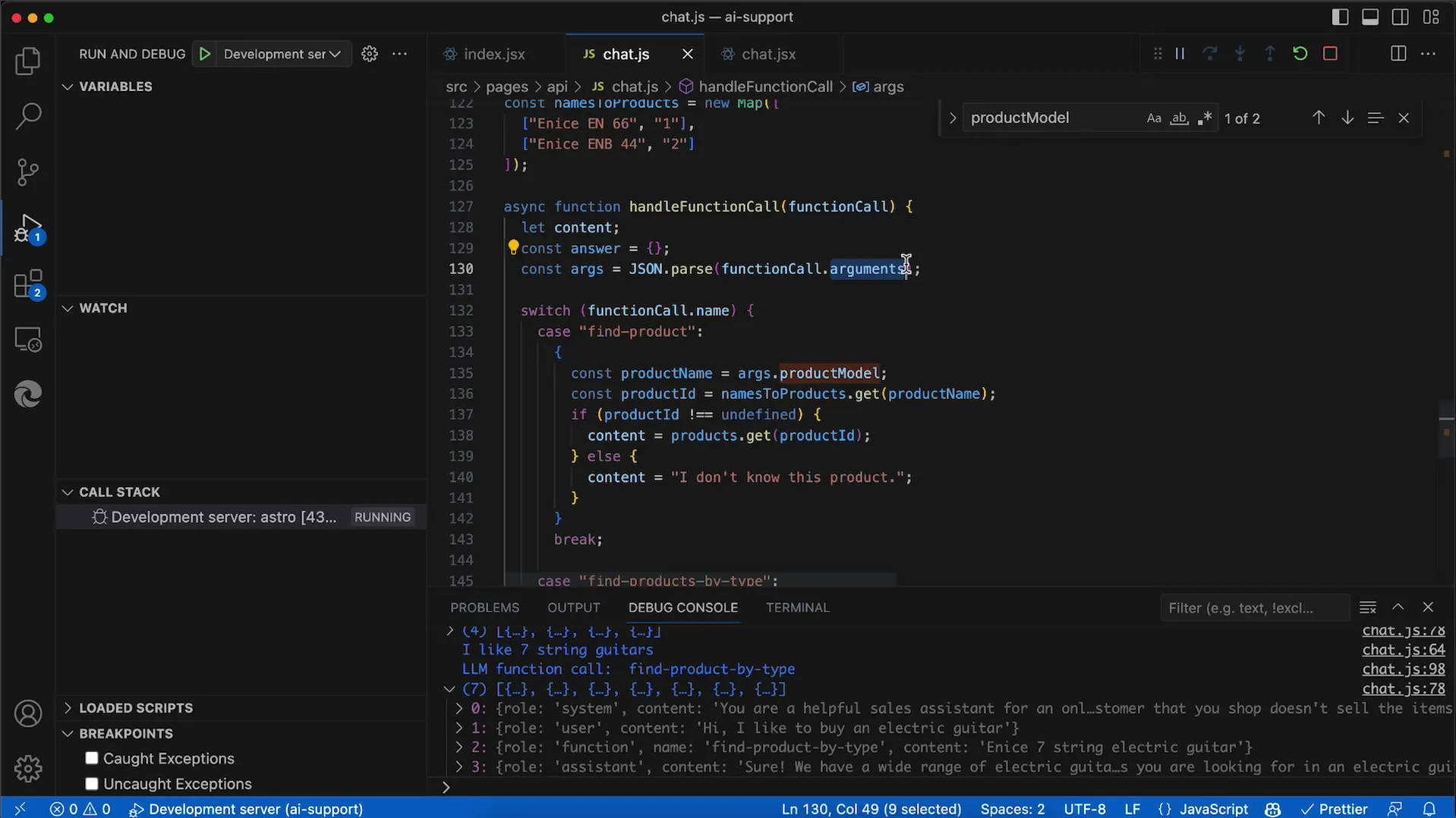
Step 6: Testing the Implementation
After making the implementations, it's time to test the product search. We will query different product types to ensure that the appropriate responses are returned. Initially, we will test the availability of an electric bass.
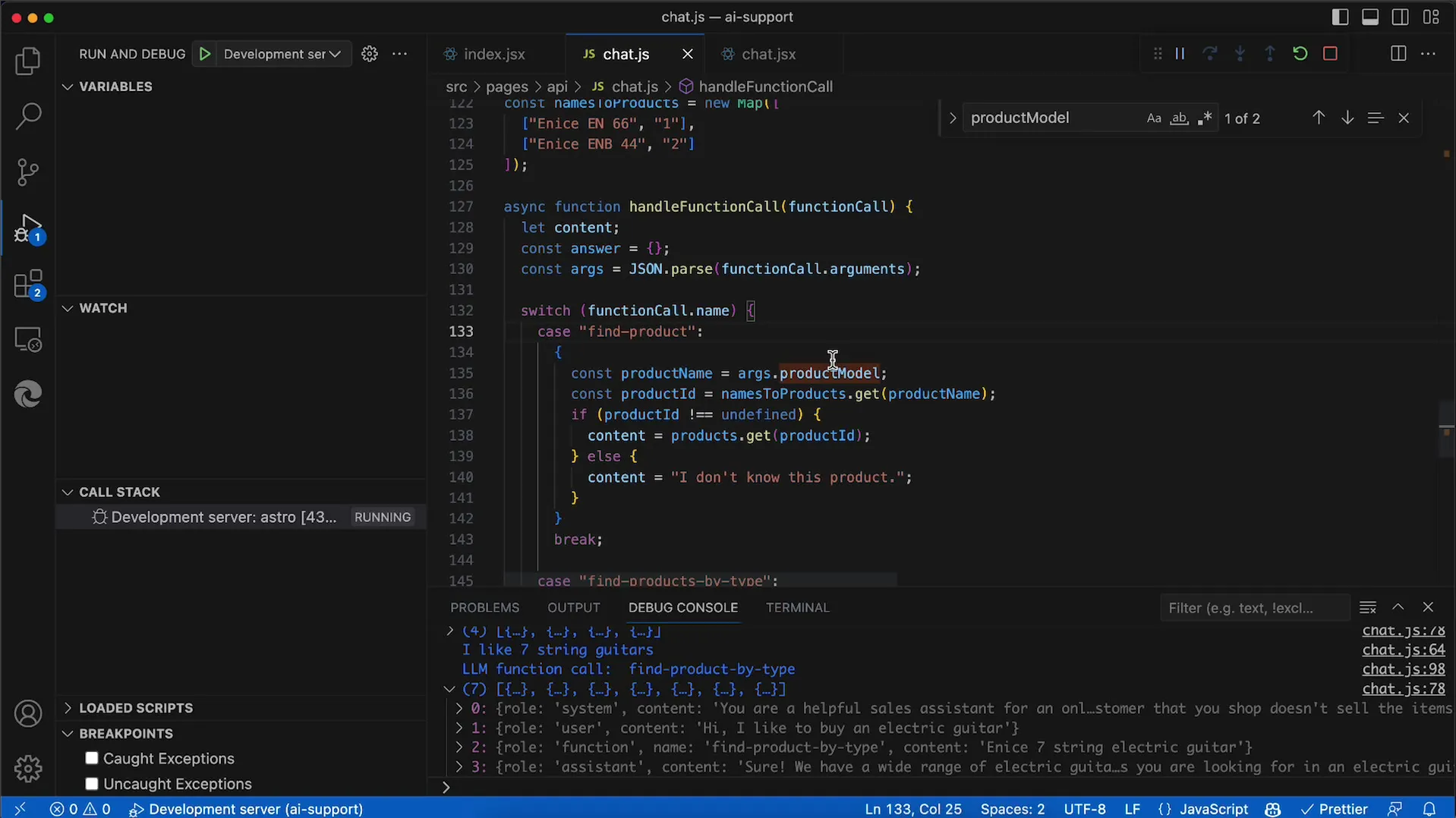
Next, we will also test for a non-existent product, such as an acoustic guitar, to verify if the error message is displayed correctly.
Step 7: Improvements to the Product Database
We have determined that our product database is very limited. Currently, there are only two products. To enhance user experience, we should add additional products and types to make the search function more relevant.
We can also implement additional functionalities to further improve the overall experience and offer users a greater variety of products.
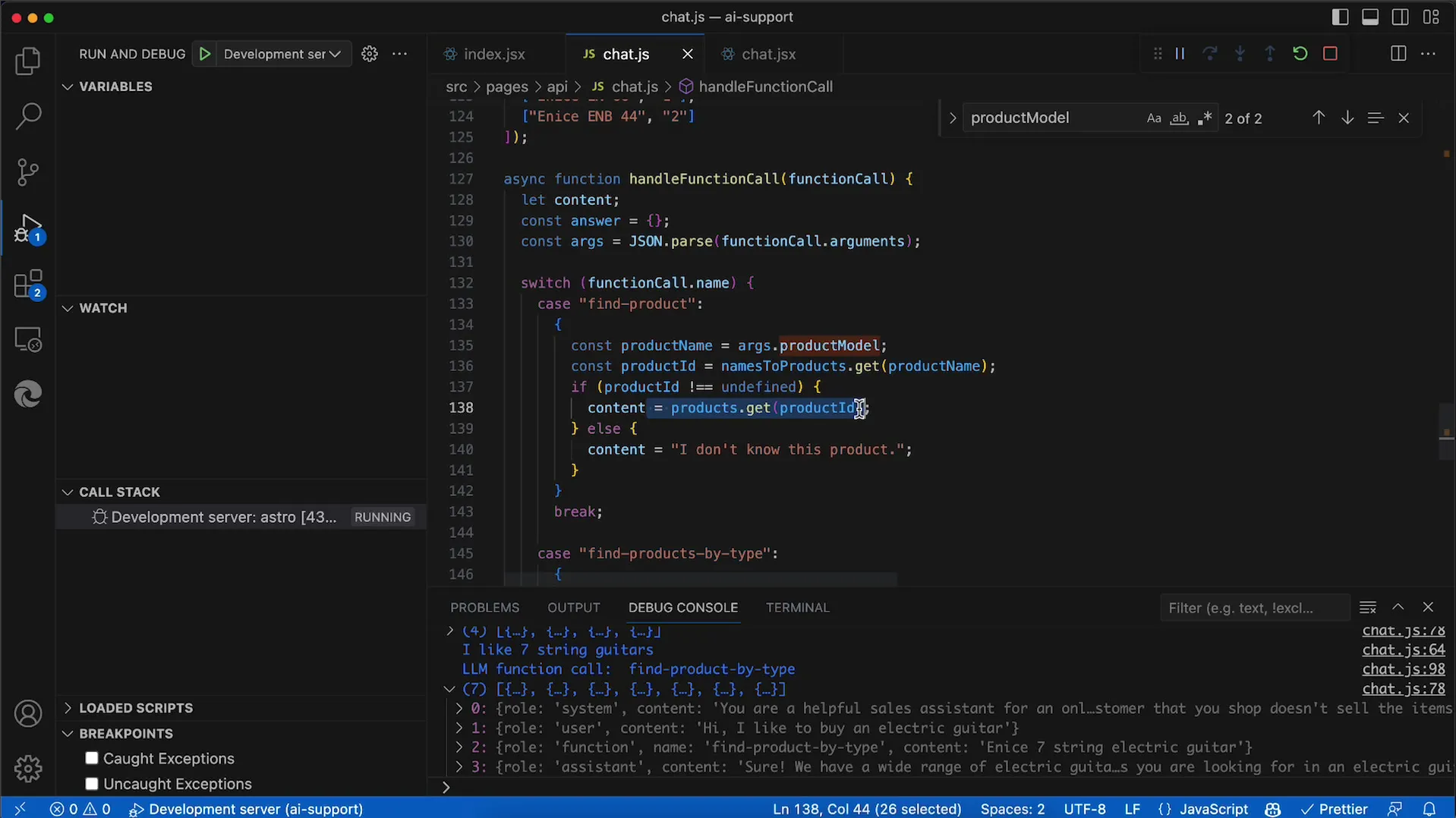
Summary
In this tutorial, you have learned how to enhance the product search using the OpenAI API by creating a simulated database with Maps and customizing the search functions. We have covered the steps to implement search functions based on product names and types and shown the importance of clear error handling.
Frequently Asked Questions
What is the role of the Map in product search?The Map simulates a database and stores product information in key-value pairs that can be efficiently retrieved.
How can I test the product search?You can test it by making various product queries via the API and checking the responses.
What should I do if a product is not found?You should return a clear error message informing the user that the product is not available.
How do I add more products to the database?You can add new products to the Maps by entering their product ID, description, and type into the corresponding Maps.
How can I improve user experience in product searches?By providing relevant feedback and a wide range of products, you can significantly enhance the user experience.


